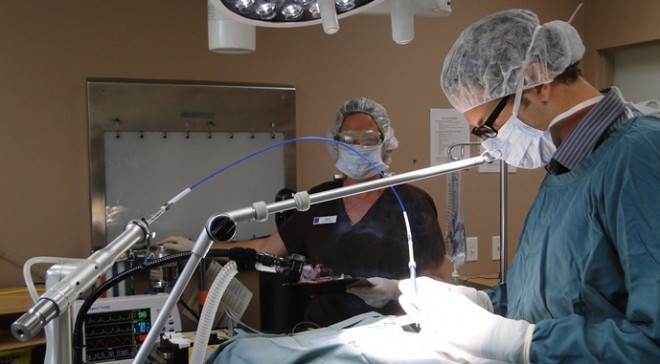Why does your pet need general anesthesia?
For some procedures, such as dental cleanings and most surgeries, your pet will need to be administered general anesthesia so that he or she will be unconscious and not feel pain.
What happens to your pet when they undergo general anesthesia?
We begin most general anesthetic procedures by administering a sedative to help the pet relax, and to provide pain control for the procedure. We then shave your pet’s leg, and place an intravenous catheter. An intravenous drug is given to provide complete anesthesia, and an endotracheal tube is placed into the patient’s trachea (windpipe) to establish a patent and protected airway. To maintain the state of unconsciousness, we deliver a gas anesthetic in combination with oxygen through the endotracheal tube. Our patients are connected to a monitoring device that measures their heart rate, respiratory rate, oxygen saturation, blood pressure and body temperature. The patient is also placed on a special heating blanket to keep them warm. A veterinary technologist monitors the patient during the entire procedure to make sure they remain safe and comfortable. When needed, the patient may also receive intravenous fluids, additional pain medications, and antibiotics during surgery. After the surgery is finished, a technologist remains with the patient until they are awake. The patient is wrapped up in warm comfortable blankets, and monitored closely for the rest of their stay.
Please contact us if you have any questions or concerns about your pet receiving general anesthesia, or about the procedure for which your pet is scheduled.

